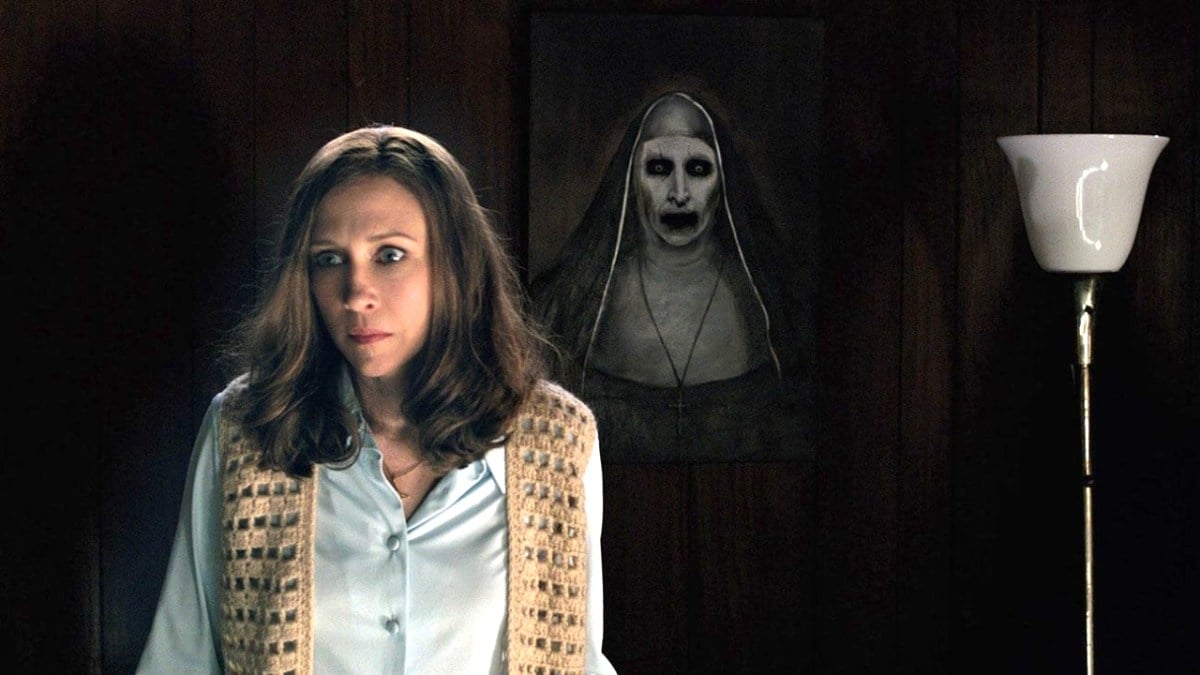Focused on creating the feeling of fear, horror has existed for centuries, originating with supernatural folklore involving vampires, werewolves, and all manner of mythical creatures. Since Greek mythology, derived from storytelling around 700 BC and beyond, horror has evolved from fictional folk tales to on-screen nightmares. Now, horror has a plethora of subgenres, ranging from slashers to psychological thrillers, and the 21st century thrives on advanced technology, including CGI and special effects makeup. The ’80s marked the beginning of truly terrifying cinematic horror, tracing its sources back to John Carpenter’s Halloween (1978), which set the standard for modern horror films through the ’00s.
Over the years, sequels, prequels, threequels, and requels have spawned longstanding horror franchises that have survived the century transition. Some are trend-setters while others are slasher sheep following the crowd. Regardless, these are some of the best horror franchises of all time, each perfectly unique and ferociously frightening, consisting of multiple installments spanning many years of story, character, and concept development. Time to settle the age-old debate and find out which horror franchise trumps all others.
12. The Purge (2013)

Starting at the bottom, The Purge franchise revolves around a fascinating concept: what if the government decided — for one night only — to make all crime, even murder, legal? As of 2022, there have been five feature-length films produced; The Purge, The Purge: Anarchy, The Purge: Election Year, The First Purge, and The Forever Purge. Interestingly, the film presents itself as a crime-free America, a seemingly impossible feat that is simply too good to be true — because it is. Every year, the dystopian country permits an annual holiday where everything goes and for 12 hours, any and all crimes become decriminalized.
The Purge franchise ranks so low because it can get dreadfully repetitive. In 2013, when The Purge debuted, the thought-provoking notion that legalizing all crimes could result in mass homicide and pandemonium solidified itself as fresh, original, and untouchable. Unfortunately, every succeeding chapter failed to reinvent the plot and committed itself to insistently covering old ground. Still, despite its hackneyed diegesis, The Purge is considered the eighth-highest grossing horror film franchise of all time and aided in propelling Blumhouse Productions’ success and building a legacy.
11. Paranormal Activity (2007)
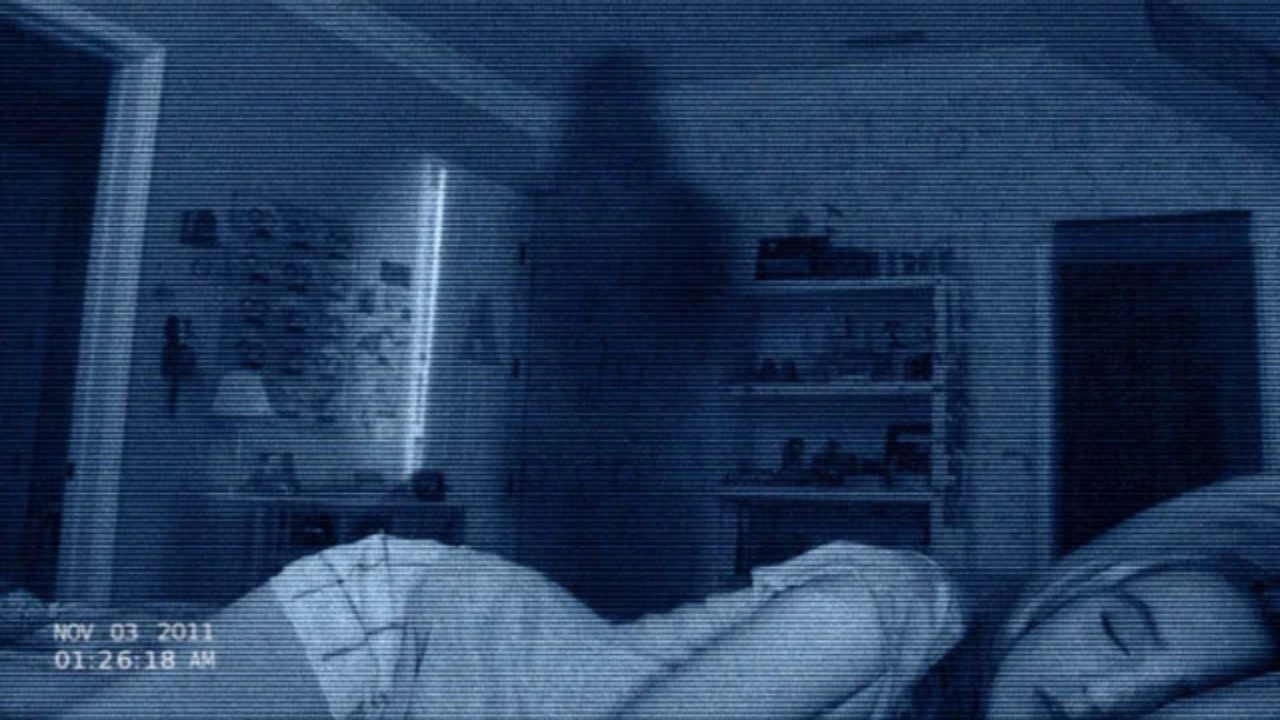
For those who don’t believe in ghosts, Paranormal Activity may look cheap, tacky, and unrealistic. However, for the believers among us, it could be a retelling of personal experiences, perhaps even an “art imitates life” scenario. Although it cannot be credited with inventing the found footage genre (that honor goes to The Blair Witch Project), the Paranormal Activity franchise utilizes a similar premise in handheld cameras and purposely amateur filmmaking. The original premiered in 2007, then spawned a universe that comprises eight films; Paranormal Activity, Paranormal Activity 2, Paranormal Activity 3, Paranormal Activity 4, Paranormal Activity: The Marked Ones, Paranormal Activity: The Ghost Dimension and Paranormal Activity: Next of Kin.
As for the premise, the film series typically follows various families who encounter, become haunted by, and subsequently capture footage of the demon Asmodeus, aka Prince of Demons, who stalks and ultimately murders its victims. Paranormal Activity makes use of camera trickery in that production cameras act as in-film security cameras that record the haunted happenings. Overall, the franchise make a strong profit, indicating commercial success, but as expected, each film earned progressively worse critical feedback and eventually the jump scares became overused and the same-old concept became overplayed.
10. Evil Dead (1981)
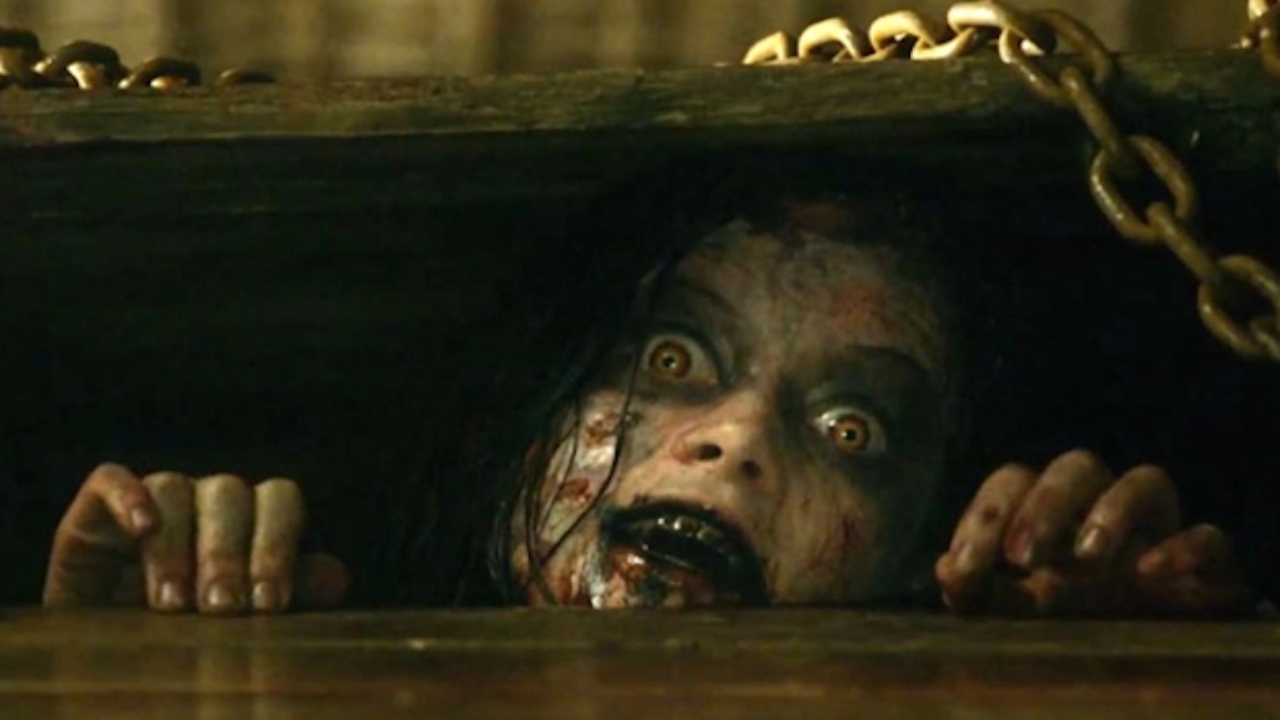
Sam Raimi rose to prominence during the ’80s and ’00s, a charmed career that he owes to Evil Dead, the horror franchise that began as a one-shot feature film idea and extended its reach into video games, comic books, and a television series. The film franchise focuses on demonic possession and the havoc it wreaks for protagonist Ash Williams across a four-part (soon to be five-part) series, including The Evil Dead, Evil Dead II, Army of Darkness, Evil Dead, and Evil Dead Rise (coming in 2022). In The Evil Dead, a group of five vacationers discover an audio tape that releases a legion of demonic spirits that possess four students, forcing the fifth to battle an onslaught of gory chaos.
Viewer reception for the initial 1981 release was universally positive from critics and audiences alike. In the years since, The Evil Dead films — specifically the original film — have become cult classics, cited as one of the greatest horror franchises of all time and launching director Sam Raimi’s career, which led to the esteemed Spider-Man trilogy. The Evil Dead achieved a huge milestone for graphic horror, potentially even kickstarting the gore genre, but sadly, other horror franchises are just more memorable and presently relevant.
9. Final Destination (2000)

Could you imagine having a premonition of your death that involves witnessing exactly when and how it would happen? Well, thankfully, you don’t need to. Final Destination answered that burning question for us. All five films ⏤ Final Destination, Final Destination 2, Final Destination 3, The Final Destination and Final Destination 5 ⏤ follow a group of individuals who repeatedly escape their impending deaths after the main protagonist experiences frequent premonitions that warn them of mass-casualty accidents. The original script was intended to be written for The X-Files television series but was later developed into a full-fledged franchise.
Rather than using the stereotypical axe-murderer or other physical criminal as an antagonist, Final Destination focuses on the manifestation of Death as it manipulates the environment to ensure that the central characters meet their fated demise after cheating it persistently. The Final Destination films have often been commended for their refreshing departure from common horror tropes, but the franchise has also been criticized for falling dramatically flat and losing its flair to bad acting and standardized subplots that conform to witless teen horror stereotypes.
8. A Nightmare on Elm Street (1984)
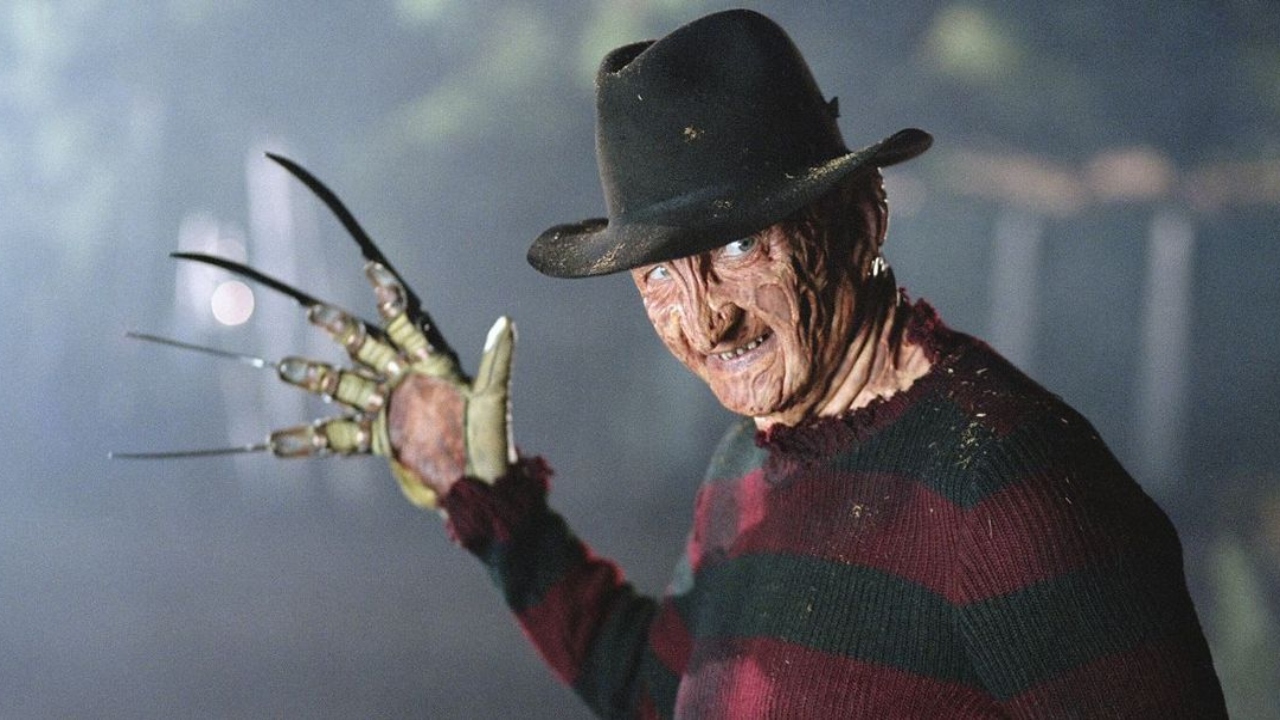
Robert Englund’s horror legend Freddie Krueger made his cinematic debut in Wes Craven’s A Nightmare on Elm Street, a terrifying tale about teenagers who are hunted in their dreams by a vengeful ghost with a blade-fixed glove and a lethal vendetta. Overall, there are nine feature-length films in the Nightmare on Elm Street canon: A Nightmare on Elm Street, A Nightmare on Elm Street 2: Freddy’s Revenge, A Nightmare on Elm Street 3: Dream Warriors, A Nightmare on Elm Street 4: The Dream Master, A Nightmare on Elm Street 5: The Dream Child, Freddy’s Dead: The Final Nightmare, Wes Craven’s New Nightmare, Freddy vs. Jason, and the 2010 reboot A Nightmare on Elm Street. The original film released in 1984, marking the beginning of Freddy Kreuger’s reign of terror.
The Nightmare on Elm Street franchise has garnered mixed reviews from critics throughout its almost 40-year run, but proved to be a box office success despite ups and downs with some sequels hitting the mark better than others. For such a low-budget feature, A Nightmare on Elm Street is extraordinarily polished and stands tall as a superior example of an overworked slasher genre. It has been praised as highly imaginative, chilling, and able to effectively test the boundaries between fiction and reality. Wes Craven went on to direct Scream, another hugely impactful slasher franchise. Inversely, A Nightmare on Elm Street fails to surpass more fleshed-out, actively influential and enjoyable slashers like Halloween and Friday the 13th as well as its successor, Scream, overshadowing Craven’s earlier efforts.
7. Insidious (2010)

From James Wan ⏤ best known for spearheading The Conjuring universe and Saw ⏤ and Leigh Whannell, the Insidious franchise has produced four films thus far: Insidious, Insidious: Chapter 2, Insidious: Chapter 3, and Insidious: The Last Key, all of which were commercially successful. Derived from the case files of demonologists, the Insidious plot follows a couple whose son mysteriously enters a comatose state and becomes a vessel for spirits that haunt the family household. In later installments, the central storyline revolves around the psychic Elise — who helps the aforementioned couple exorcize the demons — and her own experiences with malevolent entities. In 2020, it was announced that a direct sequel to Chapter 2 was in development as a presently untitled project.
Insidious was heavily censured for its lackluster ending as a result of a shaky final act. The film begins with a promising premise, strong characters, and endless possibilities, but it wastes all of its best assets, even if it excels at building nail-bitting suspense. Insidious generates an unnerving atmosphere and makes its audience feel daunted without the needless attempts at overpowering gore. Rather than relying on supernatural elements to amp up the scare factor, Insidious borders on the psychological horror that leaves you double-taking those dark corners. It somehow lives up to impossibly high standards set by Wan’s Saw, but turns those expectations upside down, proving that horror can be horrifying in the subtlest of ways. Unfortunately, like many other franchises, the sequels get worse as the story dissipates into nothingness and jump scares become their most valuable tool.
6. Saw (2004)
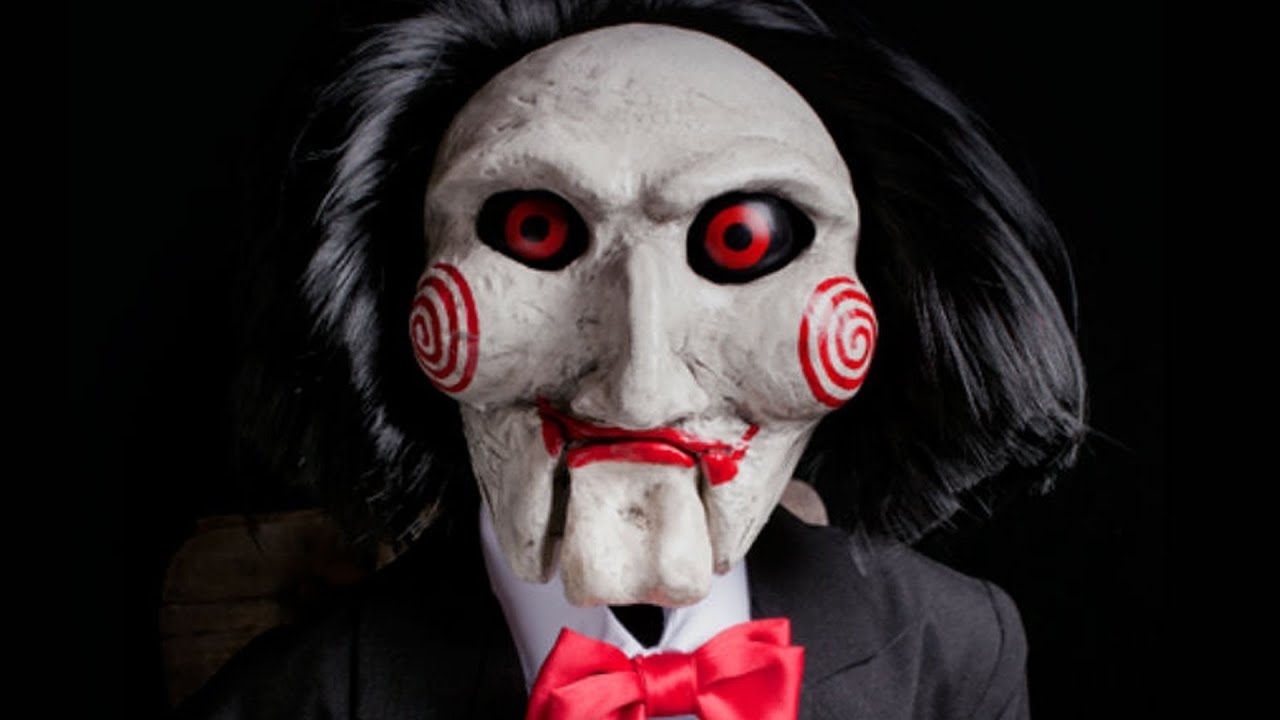
Prominent director James Wan began his illustrious career by creating the Saw franchise. In 2004, he directed the original Saw, which became one of the most profitable horror films since 1996’s Scream. Since then, the Saw franchise has gained a cult following and has often been cited as one of the most revolutionary horror franchises of all time. Despite reeling in undoubtedly mixed reviews and dividing its audience into strictly “love” or “hate” categories due to its gruesome themes, Saw has become a widely respected, trend-setting franchise that invented the “torture porn” subgenre and inspired franchises like Hostel. As of 2022, there are nine Saw films: Saw, Saw II, Saw III, Saw IV, Saw V, Saw VI, Saw 3D, Jigsaw, and Spiral. A tenth entry in the series, titled Saw X, is currently in development. Wan’s body horror franchise chronicles the ongoing murder spree of the Jigsaw killer, who traps his victims in “games” that involve personal sacrifice (usually self-mutilation) in exchange for freedom and survival. Jigsaw assumes that these “tests” will instil the value of human life in his unwilling victims.
As the Saw series has continued its evolution, the reviews have been mostly negative, deeming the franchise “torture porn” as a derogatory and dismissive term. However, Saw remains one of the highest-grossing horror franchises of all time, competing with the likes of Halloween, The Conjuring, and Scream. It has been publicly shamed as “derivative, messy, and nonsensical” and criticized for not being conventionally “scary” like most typical horrors. On the other hand, Saw has been praised for its departure from horror norms, including a motive that isn’t as bland as the conventional and mindless “kill for revenge” mindset. Saw keeps few secrets and delivers an expected story, but it does so with a certain flair that merits admiration.
5. Child’s Play (1988)

The Child’s Play franchise, also known as the Chucky series, was created by Don Mancini and mainly focuses on Charles Lee Ray, aka Chucky, a notorious serial killer who escapes death by transferring his soul into a “Good Guy” doll using a voodoo spell to continue his murder spree. The 1988 original Child’s Play spawned six sequels, a remake and a television series: Child’s Play, Child’s Play 2, Child’s Play 3, Bride of Chucky, Seed of Chucky, Curse of Chucky, Cult of Chucky, the 2019 remake Child’s Play, and Syfy’s Chucky series. An interesting trait that helps the Child’s Play franchise stand apart from the crowd is its compelling concoction of psychological horror blended with satirical dark humor that produces more of a horror comedy than a traditional slasher.
More often than not, Child’s Play has been slammed for its confusing sense of self as it walks the tightrope of comedy and horror and loses its sheen to off-putting gags. However, it has been frequently praised for its energetic and persistently scary yet hilariously unorthodox approach to reinventing the slasher genre. Unfortunately, Child’s Play found controversy in its decidedly ugly plot involving a ruthless serial killer terrorizing a six-year-old child that incites violence against children. The Child’s Play sequels performed reasonably at the box office and Syfy’s Chucky series debuted to resoundingly positive reviews, but the 2019 remake was bashed for rehashing the same, exhausted plot and falling flat in an attempt to rejuvenate the content. The Child’s Play franchise ranks so highly because it will always be considered one of the greats in cinematic horror.
4. The Texas Chainsaw Massacre (1974)
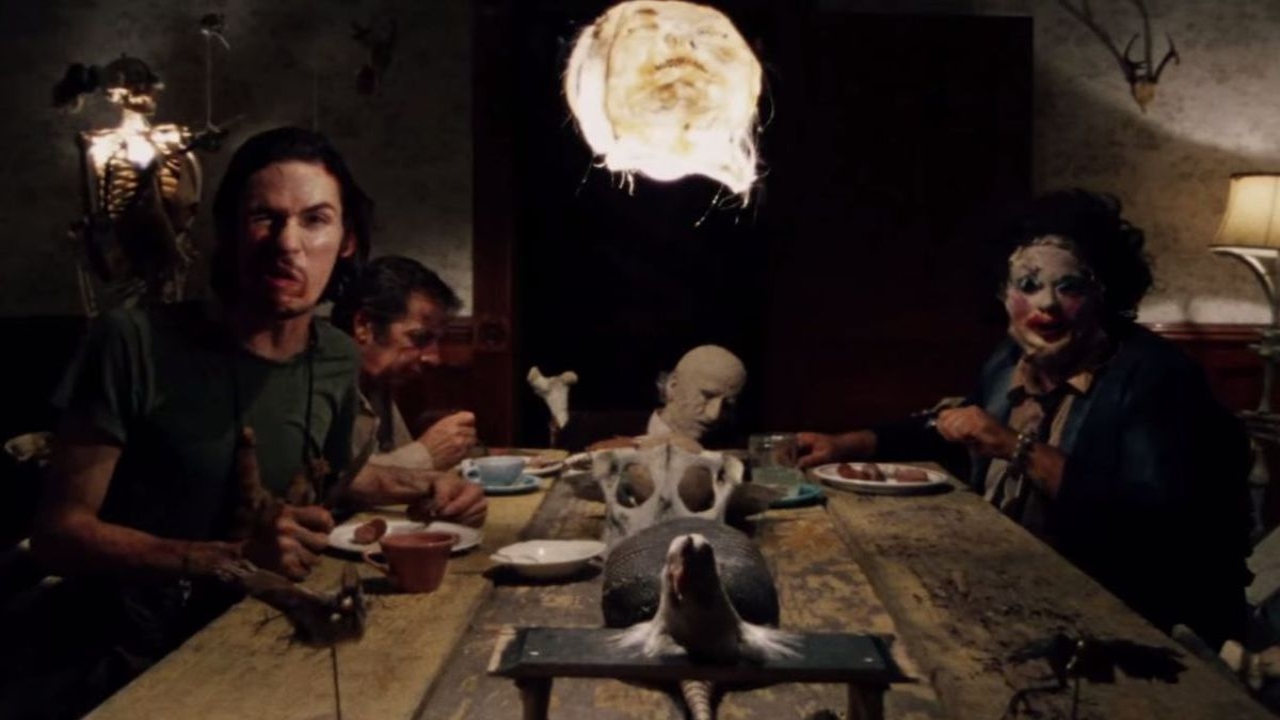
The Texas Chainsaw Massacre franchise consists of nine feature-length films, including the 1974 original, and has since encouraged the production of several sequels, remakes, and a prequel. The full lineup includes The Texas Chain Saw Massacre (1974), The Texas Chainsaw Massacre 2, Leatherface: The Texas Chainsaw Massacre III, Texas Chainsaw Massacre: The Next Generation, The Texas Chainsaw Massacre (2003), The Texas Chainsaw Massacre: The Beginning, Texas Chainsaw 3D, Leatherface, and Texas Chainsaw Massacre (2022). The franchise follows the murderous sprees of the cannibalistic Leatherface, a serial killer who terrorizes visitors in the desolate Texan countryside. Due to its tremendous success, The Texas Chainsaw Massacre has undergone multiple remakes that attempt to remodel the classic concept for modern-day audiences, but unfortunately, these remakes have bombed massively, as have some of the sequels and the prequel.
One of the biggest criticisms for the The Texas Chainsaw Massacre is its consistently plastic scripts and blood-soaked legacy that hides a saga of unfinished stories. Thankfully, Marilyn Burns, who portrays Sally, was a saving grace for the original and it shows in how audiences yearn for that astounding acting in her absence. At times, the sadistic violence feels like misguided filler, especially as the overarching narrative gets more hopelessly lost with each half-hearted sequel. As for the positives, the franchise delivers heart-stopping tension, ingraining a sense of foreboding in its audiences that can be difficult to shake off once the credits start rolling. Still, despite its weak successors, The Texas Chainsaw Massacre is one of the best establishing films in horror history — often remade but never replicated — thereby earning its fourth-place spot on this list.
3. The Conjuring (2013)
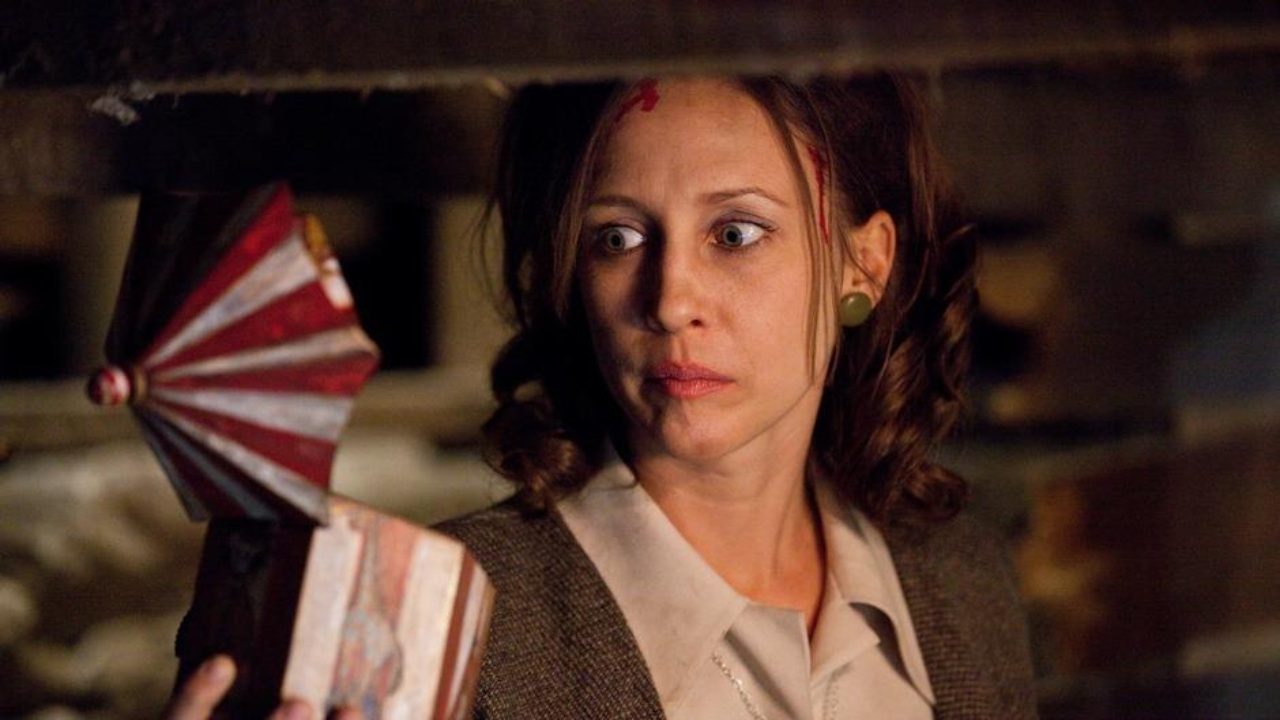
For some, it may be surprising to see The Conjuring, a modern horror masterpiece, rank higher than the old-school classics from the ’80s and ’90s. James Wan’s supernatural trilogy, along with its sister trilogy Annabelle and spin-offs The Nun and The Curse of La Llorona ⏤ birthed from the success garnered by Saw and Insidious ⏤ collectively constitute to form The Conjuring universe. Taking place canonically between 1952 and 1981, The Conjuring universe timeline is as follows: The Nun, Annabelle: Creation, Annabelle, The Conjuring, Annabelle Comes Home, The Curse of La Llorona, The Conjuring 2, and The Conjuring: The Devil Made Me Do It. The Conjuring universe as a whole follows the real-life exploits of paranormal investigators Ed and Lorraine Warren, including their personal experiences with the Annabelle doll.
As expected, every explicitly titled Conjuring film involved in the original trilogy grossed much higher at the global box office than its various attachments. Similarly, the Conjuring trilogy earned more universally positive feedback. The spin-off series recall the origins of the entities that Ed and Lorraine have faced, whereas the main series focuses on the Warrens themselves. The Conjuring universe has been renowned for the irreplaceable on-screen chemistry of Patrick Wilson and Vera Farmiga as Ed and Lorraine Warren, respectively, and has had a substantially influential effect on the production and subsequent quality of modern horror films, often cited as inspiration for other supernatural flicks. However, the spin-offs and prequels have been compared to the main series as indisputably inferior, therefore dragging down the overall universe, even if it is the second highest-grossing horror franchise of all time.
2. Scream (1996)

As one of the first and only self-referential and meta horror franchises, Scream safely steals the second-place spot. Not just for its distinguishable antagonist, Scream has received resoundingly positive reviews since its original film released in 1996 and remained the most successful in the franchise by a long shot. Scream follows its main protagonist Sidney Prescott as she repeatedly encounters and survives murderers who adopt the persona Ghostface in order to stalk and kill their victims. Sidney is accompanied by deuteragonist Dewey Riley, a Woodsboro policeman, and tritagonist Gale Weathers, a greedy tabloid reporter.
For its appealing qualities, the Scream franchise mixes irony and self-reference with a bloody good time, making it the most streamlined and consistently refreshing horror franchise on the list. Perhaps the biggest downfall for Scream is its inability to truly change the formula for slashers, using the generic tropes as a crutch, even if it does poke fun at itself. As we plough through the various sequels — Scream 2, Scream 3, Scream 4, and Scream (2022) — and analyze the advancement through the central storyline, the sad reality that Scream falls back on overused clichés becomes astoundingly apparent. Scream 3 and Scream 4 were often seen as the weaker sequels, while Scream, Scream 2, and Scream (2022) were held in high regard. The Scream franchise truly explored uncharted territory by being self-aware of horror tropes and using them ironically to generate humor.
1. Halloween (1978)
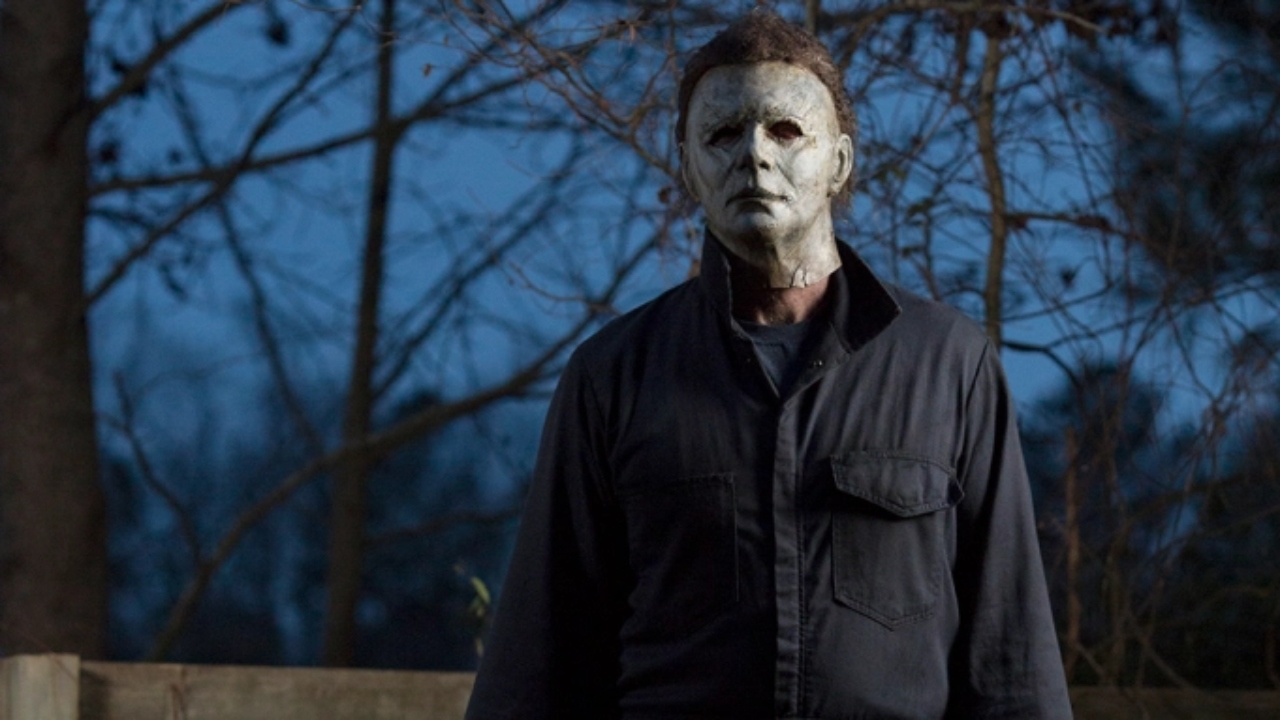
Even with all its confusing, overlapping timelines, John Carpenter’s Halloween franchise — which consists of 12 films — can be named the best of them all. The original, released in 1978, shares continuity with Halloween II, then branches off into two parallel timelines wherein one Laurie Strode lives and one dies. The “Laurie lives” timeline follows on from Halloween II with Halloween H20 and Halloween Resurrection and the “Laurie dies” timeline sees Halloween 4, Halloween 5, and Halloween 6 follow the original sequel. Rob Zombie produced his own separate universe — the “Zombie” universe — including Halloween and Halloween II. Then, in 2018, a direct sequel to the 1978 original, which ignores all other timelines, spawned an all-new trilogy consisting of Halloween, Halloween Kills, and the upcoming Halloween Ends.
When compared to other horror franchises, Halloween ranks first at the global box office, and rightly so, despite critical acclaim suggesting otherwise. Halloween (1978) and Halloween (2018) both received positive reviews, while the other sequels received mostly mixed and negative. Known to have inspired a long line of slasher films, Halloween has been often mimicked for its originality, creativity, and ability to generate real terror. Halloween feels almost immersive, as if we aren’t watching it happen, but rather it’s happening to us in some sort of surreal parallel reality. John Carpenter does that best. Even if the sequels still manage to hold their own merit as enjoyable continuations, Carpenter’s will always be the gold standard. It goes without saying that Halloween is beautifully made, only flawed by its backhanded sequels that honestly ruin the storyline somewhere along the way. Thankfully, Halloween fans always have the original to fall back on.

